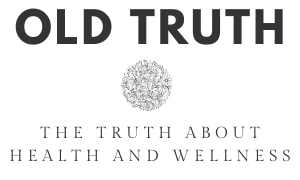If you work in a sterile hospital environment that was built by a clean room construction crew, chances are you have heard of or are certified in Pediatric Advanced Life Support (PALS) and Advanced Cardiac Life Support (ACLS). PALS and ACLS are both life support certifications and are not deemed necessary unless you work in the medical field. For instance, a lifeguard will not need to be PALS or ACLS certified but they need to be certified in CPR, First-Aid and possibly Basic Life Support (BLS) depending on their work requirements.
What is PALS?
PALS is an advanced training system for treated critically ill children. PALS was designed by the American Heart Association (AHA) and is used as a systematic approach to critical pediatric assessments. Typically this certification is required if you are an emergency responder, work in the Intensive Care Unit (ICU), or work in the Emergency Room (ER). Those who take this certification will learn treatment algorithms, team dynamics, effective resuscitation techniques, and efficient pediatric assessments. If you’re looking for a PALS certification program that is accredited, you can take at your own pace and is available online, go to this website: https://emedcert.com/products/pals-certification
The reaction from First Responders and ER Staff when a child is hurt is devastating. Don’t hesitate, get certified today.
What is ACLS?
ACLS goes beyond CPR. This certification allows trainees to take advanced measures in critical care. With ACLS students are trained on airway management, IV access, understanding emergency pharmacology and interpreting electrocardiograms. What sets this training apart from others is the ability to read and interpret heart rhythms on the electrocardiograms. This is important in determining if defibrillation is possible as the type of heart rhythm is the deciding factor. If you’re looking for an ACLS certification that is accredited, you can take at your own pace and is available online, go to this website: https://emedcert.com/products/acls-certification
There’s nothing worse than losing a life too soon, especially if it was totally preventable. Get your certification and put your skills to work when an emergency situation arises.
What’s the Difference?
The main difference between PALS and ACLS certifications is the ability to work on pediatric patients. Pediatric patients are delicate and even performing CPR on a little person is a completely different process than performing CPR on Adults. For instance, with children CPR is done at an earlier stage in cardiac arrest and more delicately, using two fingers for an infant and being careful not to break any of their little bones. To be certified in both PALS and ACLS you must get your basic certifications in CPR, First-Aid and Basic Life Support (BLS). Once you are certified in the basics you can move on to the advanced classes with ease and general knowledge in your hands.
With life’s unpredictable moments it is better to be safe than sorry. When working in a hospital environment, you can be in a situation where you’re working with adult patients and they have a child with them that suddenly becomes urgent. In these rare cases, it is best to be prepared and have PALS knowledge in your hands. In fact, some emergency cases may pop up at any time, like at the scene of an accident, an incident in a store or an accidental choking in a restaurant. Don’t be the person who says, If I was only certified I could have saved that person or worse that child. There’s nothing worse than a life lost too soon, or a life lost that could have been prevented. Be prepared and get your ACLS and PALS certification.


Comments are closed, but trackbacks and pingbacks are open.